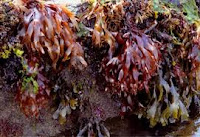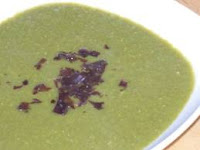Syrian rue is known in North America as Mexican Rue, African Rue and in Turkey is yüzerlik or üzerlik. It may be native to the Middle East but is native to the Mediterranean region and south east Europe . It was formerly placed in the Zygophyllaceae family of plants which would have made it a relative of puncture vine (Tribulus terrestris) and aak, but it is now in the Nitrariaceae family in the order Sapindales. However it is not a relative of rue, but its young leaves do resemble that plant.
The plant was introduced into New Mexico in 1928 and is now classed as an invasive species in some of the USA ’s arid states. It has also spread to Australia and other parts of the world. It can grow to heights of a metre and has thin spiky leaves, with white flowers which are followed by seed capsules, which contain small dark brown seeds. These ripen in September.
The seeds contain harmala alkaloids which are (MOAI) Monoamine Oxidase inhibitors (MOAI). They have hallucinogenic properties and that is why the plant is a contender for being the Soma of the ancient Persian and Indian shamans who used it to gain a more profound understanding of the meaning of life.
 Although the seeds are used as incense, mixed with other fragrant herbs, the smoke from the burning plant is sad to be toxic to both humans and animals, so it cannot be used as tinder or kindling. However in
Although the seeds are used as incense, mixed with other fragrant herbs, the smoke from the burning plant is sad to be toxic to both humans and animals, so it cannot be used as tinder or kindling. However in An edible oil can be extracted from the seeds after the outer hull has been removed, and this is said to be an aphrodisiac. It is also used, as are the seeds, to rid the body of tapeworms and to stimulate lactation in breast-feeding mothers. It has also been used as a truth drug. It is also used for eye problems and as a mild sedative.
 In traditional medicine systems, the fruit and seeds have been used for stomach problems, to aid digestion and promote the flow of urine, for a variety of sexual problems, epilepsy, mental and nervous afflictions and menstrual problems.
In traditional medicine systems, the fruit and seeds have been used for stomach problems, to aid digestion and promote the flow of urine, for a variety of sexual problems, epilepsy, mental and nervous afflictions and menstrual problems. Externally the seeds are used for baldness and to relieve piles. (Strange image that- hairy piles!)
A decoction of the leaves is used for rheumatism and the root kills body lice. This is applied externally, although an infusion is taken internally too for rheumatism. The whole plant is used to treat female problems and as an aphrodisiac.
A red dye is made from the seeds which is, or rather was, called Turkey red, and was used to colour wool for carpet-making.
The
In Iranian traditional medicine the plant is used for plumbago, asthma, colic and jaundice as well as for menstrual problems. In Turkey the seeds are burnt to keep away the evil eye. Dried seeds capsules are also hung in houses and vehicles for the same purpose.
The seed hulls contain the alkaloid harmine which is toxic if ingested. However this substance is being investigated for its possible effectiveness in mental diseases, including encephalitis which is an inflammatory disease of the brain. Harmine depresses the central nervous system but small quantities are believed to be therapeutic.
The ripe seeds contain the alkaloids, harmine, harmaline, harmalol and peganine, which are not effective on contact, but their vapour is effective against fungus, bacteria, intestinal parasites and algae. Because of some of these properties there is hope that the plant extracts could be used for the control of pests on crops, rather than a chemical pesticide in the future.
 The seeds have been tested and one study concluded that they might be used as a “novel anticancer therapy.” (Lamchouri F. et al., February 2000, Journal of Fitotherapia; “In vitro cell-toxicity of Peganum harmala alkaloids on cancerous cell-lines”) Other studies have concurred although these alkaloids have not been tested on humans with cancer.
The seeds have been tested and one study concluded that they might be used as a “novel anticancer therapy.” (Lamchouri F. et al., February 2000, Journal of Fitotherapia; “In vitro cell-toxicity of Peganum harmala alkaloids on cancerous cell-lines”) Other studies have concurred although these alkaloids have not been tested on humans with cancer. The plant may have been rightly revered by the ancients for its spiritual and medicinal properties.
































